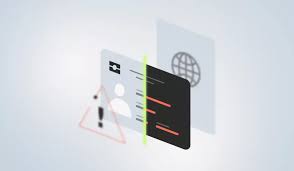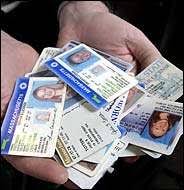counterfeit IDs
Introduction
In today’s fast-paced world, identity has become one of the most crucial aspects of modern life. From accessing personal financial information to purchasing age-restricted products, our identities serve as key authentication points. However, with advancements in technology comes an array of counterfeit solutions, including counterfeit identification cards (IDs), which have become a concerning problem across multiple sectors.
Counterfeit IDs have penetrated various industries, from underage access to restricted items (such as alcohol and tobacco) to more nefarious uses, including financial fraud and illegal immigration. Understanding the intricacies of counterfeit IDs, how they are produced, and the implications they carry is essential for businesses, law enforcement, and individuals alike.
This article seeks to dissect the counterfeit ID market, analyze its product features, target audience, legal ramifications, and highlight the emerging technologies to combat the rise of fraudulent identification.
1. Understanding Counterfeit IDs: Definition and Types
Counterfeit IDs, also referred to as fake or fraudulent IDs, are false documents produced with the intent of imitating official government-issued identification cards. They come in various forms, from poorly made fakes to sophisticated replicas that closely resemble genuine IDs.
Types of Counterfeit IDs:
Low-Quality Counterfeit IDs: These are often made using basic printing technologies and low-cost materials. They may lack essential security features, such as holograms, UV ink, or microtext, making them easily identifiable by trained personnel or scanning devices. They are commonly used for casual purposes, such as by underage individuals seeking to purchase alcohol.
High-Quality Counterfeit IDs: These IDs are much harder to distinguish from genuine ones. They often incorporate more advanced techniques, such as digital printing, embossed seals, and replicated security features. High-quality counterfeit IDs are typically produced by criminal enterprises and are often used for more serious activities, such as financial fraud or identity theft.
Fraudulently Obtained Genuine IDs (FOG IDs): Rather than creating a fake ID from scratch, fraudsters may obtain a legitimate ID through illegal means (e.g., bribing a DMV employee or stealing someone’s personal information). These IDs are particularly difficult to detect because they are technically authentic documents issued by a legitimate authority but acquired under false pretenses.
2. Market Analysis of Counterfeit IDs
2.1 Growth of the Counterfeit ID Market
The market for counterfeit IDs has grown significantly, driven by various factors, including the rise of e-commerce, increased demand for access to age-restricted products, and growing online platforms that facilitate the purchase of fake documents.
The rise of the darknet and anonymous cryptocurrency transactions has also made it easier for individuals and organized crime groups to buy and sell counterfeit IDs. The relatively low cost of acquiring these fake IDs, combined with the high-quality replicas available today, has contributed to the expansion of this underground economy.
2.2 Regional Trends
While counterfeit ID use is a global issue, specific trends vary by region:
- United States: The demand for counterfeit IDs in the U.S. is largely driven by the drinking age (21 years old), with many underage college students seeking fake IDs to purchase alcohol. Additionally, there’s a demand for counterfeit IDs for immigration purposes, as individuals may seek fake documents to work illegally or evade deportation.
- Europe: In Europe, counterfeit IDs are often tied to border control issues and immigration. Fraudsters use counterfeit passports and national ID cards to travel across borders undetected.
- Asia: In countries like China and India, counterfeit IDs are often used for employment fraud and tax evasion. Additionally, there is a large market for fake academic degrees and certifications.
2.3 Online Marketplaces and the Dark Web
The internet, particularly the dark web, has become a hub for counterfeit ID transactions. Several websites, forums, and encrypted messaging services offer a variety of services, from simple age-modified ID cards to complex identity packages that include forged driver’s licenses, passports, and social security numbers.
Cryptocurrencies such as Bitcoin have further facilitated the growth of this market, providing a level of anonymity to both buyers and sellers.
3. Product Features: What Makes a Good Counterfeit ID?
Several key elements determine the quality of a counterfeit ID. As counterfeiters attempt to create more sophisticated fakes, these features become more critical in distinguishing a passable fake from an obvious fraud:
3.1 Material and Physical Build
Most government-issued IDs are made from polycarbonate or similar sturdy materials. A good counterfeit ID will mimic this, providing the right weight, thickness, and flexibility.
3.2 Security Features
Modern IDs contain a variety of security features to prevent forgery. High-quality counterfeit IDs may attempt to replicate some or all of these, including:
- Holograms: Used on most modern IDs, these are difficult to replicate. Fake IDs may use stickers or poor-quality printed holograms.
- UV Ink: Some IDs contain details visible only under ultraviolet light, such as hidden text or symbols.
- Microprinting and Ghost Images: Microtext (text that is only visible under magnification) and ghost images (faint background images of the ID holder) are common security features.
- Barcodes and Magnetic Strips: Counterfeiters attempt to replicate machine-readable features, but low-quality fakes may not pass barcode or magnetic strip scans.
3.3 Personal Information
The personal information on an ID, such as the name, address, and date of birth, must look legitimate. Some counterfeiters may generate fake information, while others will use stolen identities.
4. Target Audience for Counterfeit IDs
4.1 Underage Individuals
The most common users of counterfeit IDs are underage individuals, typically between the ages of 18-20, seeking to circumvent age restrictions for alcohol, tobacco, or nightclub entry.
4.2 Immigrants and Workers
Some individuals use counterfeit IDs to gain employment in countries where they may not have legal work authorization. These IDs may include forged social security numbers or work permits.
4.3 Fraudsters and Criminal Organizations
At the more serious end of the spectrum, counterfeit IDs are used by organized crime groups to commit identity theft, financial fraud, or travel across borders undetected.
5. Legal Ramifications of Using or Producing Counterfeit IDs
5.1 For Users
In many countries, the possession or use of counterfeit IDs is illegal and punishable by fines, community service, or imprisonment. In the U.S., for example, penalties vary by state, but most impose hefty fines or jail time for individuals caught using fake IDs. For immigrants, using fraudulent identification could result in deportation or a ban from future re-entry into the country.
5.2 For Producers
Producing or distributing counterfeit IDs is a more serious offense, often classified as a felony. Criminal organizations involved in the production of fake IDs may also face charges related to fraud, racketeering, or even terrorism if the fake IDs are used for illicit activities.
6. Technological Advancements in Detecting Counterfeit IDs
6.1 AI and Machine Learning
Artificial intelligence (AI) and machine learning algorithms are now being used to enhance the detection of counterfeit IDs. By analyzing thousands of images and data points, AI systems can identify patterns that may not be visible to the human eye, helping to flag fake IDs at security checkpoints or during online transactions.
6.2 Blockchain Technology
Blockchain can be used to create decentralized identity verification systems, making it more difficult for counterfeit IDs to pass undetected. For example, some governments are exploring blockchain-based digital IDs that are tamper-proof and easily verifiable.
6.3 Biometric Authentication
The integration of biometric data, such as fingerprints or facial recognition, into identity verification processes is becoming increasingly common. Since biometric information is unique to each individual, counterfeiters cannot replicate it.
6.4 Mobile and Online Verification Systems
Many companies now offer mobile verification solutions, allowing users to scan their IDs with a smartphone to verify their authenticity. These systems cross-reference the scanned ID with a government database, flagging any discrepancies.
7. Conclusion: The Future of Identity and Counterfeit IDs
The world of counterfeit IDs is constantly evolving, with counterfeiters finding new ways to circumvent traditional security features. However, as technology advances, so do the tools used to detect and prevent identity fraud. The development of blockchain, AI, and biometric technologies provides promising solutions to reduce the prevalence of counterfeit IDs, but the ongoing cat-and-mouse game between law enforcement and counterfeiters is likely to continue.
Understanding the risks and challenges associated with counterfeit IDs is essential not only for businesses and law enforcement but for individuals who may be tempted to use these illegal documents. The consequences of using or producing fake IDs can be severe, ranging from financial penalties to criminal charges, making it crucial to address this growing problem.
Final Thoughts
As governments and private institutions continue to invest in security technologies, the fight against counterfeit IDs will become increasingly sophisticated. However, a comprehensive approach, including public awareness, stricter regulations, and international cooperation, is necessary to combat the growing issue of fake identification.
 market analysis of fake IDs
market analysis of fake IDs
 create photo ID
create photo ID
 counterfeit IDs
counterfeit IDs
 discreet delivery
discreet delivery